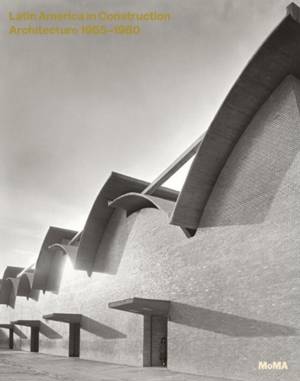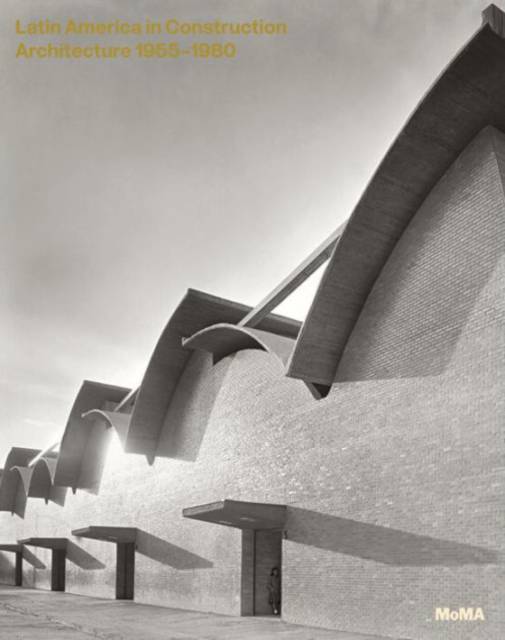
- Retrait gratuit dans votre magasin Club
- 7.000.000 titres dans notre catalogue
- Payer en toute sécurité
- Toujours un magasin près de chez vous
- Retrait gratuit dans votre magasin Club
- 7.000.0000 titres dans notre catalogue
- Payer en toute sécurité
- Toujours un magasin près de chez vous
Latin America in Construction
Architecture 1955-1980
Barry Bergdoll, Carlos Eduardo Comas, Jorge Francisco Liernur, Patricio Del RealDescription
The first comprehensive book on Latin American postwar architecture in 60 years
This groundbreaking book explores postwar Latin American architecture during the dynamic years between 1955 and 1980--a period of extraordinary architectural creativity set against the backdrop of massive urbanization, nation-building, and political upheaval.
Key architects include Lina Bo Bardi, Luis Barragan, Félix Candela, Oscar Niemeyer, and Carlos Raul Villanueva, but the authors also significantly expand the cannon by including stellar--and often previously unpublished--work by lesser-known names such as Fernando Martínez Sanabria, Eladio Dieste and Jesús Tenreiro. The book is organized like an atlas, covering architecture in Argentina, Brazil, Chile, Colombia, Cuba, the Dominican Republic, Mexico, Peru, Puerto Rico, Uruguay, and Venezuela.
Across the region, unprecedented urbanization and modernization during these key years created an urgent need for new buildings, particularly for educational, residential and public spaces. University campuses proved especially conducive for architectural creativity, and the book provides documentation on the design of educational complexes, notably Carlos Raúl Villanueva's Universidad Central de Venezuela in Caracas and UNAM in Mexico City. Multiple experiments to improve housing include stunning projects such as PREVI (Projecto Experimental de Vivienda) housing experiment in Lima, Peru, and Lina Bo Bardi's work in São Paulo and Salvador. Other highlights include Clorindo Testa's Banco de Londres in Buenos Aires, Rogelio Salmona's Torres del Parque in Bogotá, and, of course, the creation of the planned city of Brasília.
Throughout, the authors set the work in dialogue with Le Corbusier's modernism and Brutalism, as well as with the political ideologies of the time, notably Developmentalism. Together, the material challenges the widely accepted notion of Latin America as a testing ground for innovations developed in Europe and the United States, and brings to light the high quality and radical originality of architecture and urban planning in this vast and complex region.
Published in conjunction with a major exhibition at The Museum of Modern Art, New York, Latin America in Construction is edited by Barry Bergdoll, Curator, and Patricio del Real, Curatorial Assistant, Department of Architecture and Design, MoMA; Jorge Francisco Liernur, Universidad Torcuato di Tella, Buenos Aires, Argentina; and Carlos Eduardo Comas, Universidade Federal do Rio Grande do Sul, Porto Alegre, Brazil; and includes essays by over a dozen experts in the field. The 320-page book includes some 500 reproductions, providing a rich collection of visual resources on Latin American architecture, ranging from archival photographs, ephemera, drawings, models, and construction documents to striking contemporary color photographs of key buildings by the accomplished Brazilian architectural photographer Leonardo Finotti.
Readers of Latin America in Construction will be stunned by the sheer quantity of extraordinary buildings, the breathtaking speed of urban transformation and the enormous variety of architectural innovation.
Spécifications
Parties prenantes
- Auteur(s) :
- Editeur:
Contenu
- Nombre de pages :
- 320
- Langue:
- Anglais
- Illustré:
- Oui
Caractéristiques
- EAN:
- 9780870709630
- Date de parution :
- 26-05-15
- Format:
- Livre relié
- Format numérique:
- Genaaid
- Dimensions :
- 249 mm x 312 mm
- Poids :
- 2267 g

Les avis
Nous publions uniquement les avis qui respectent les conditions requises. Consultez nos conditions pour les avis.






